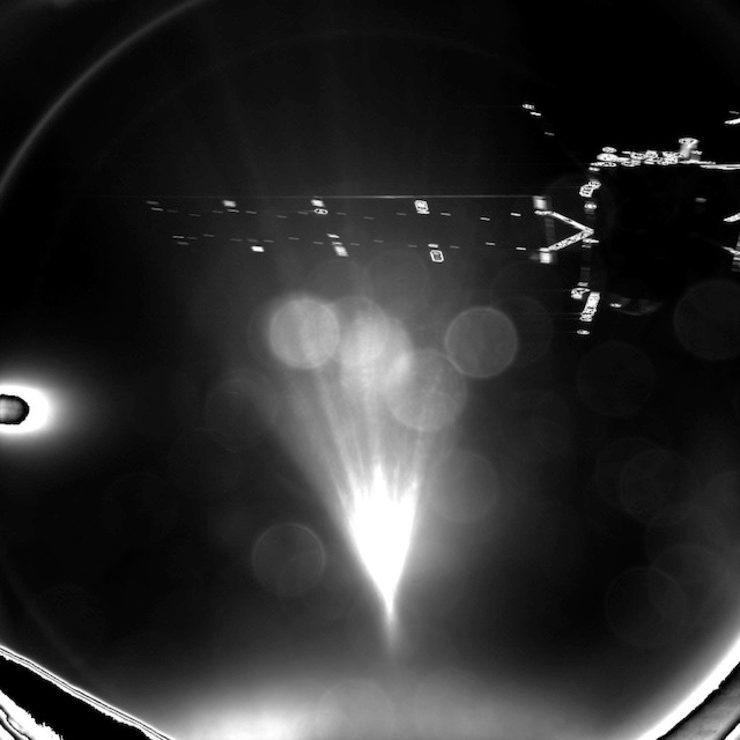SUMMARY
This is AI generated summarization, which may have errors. For context, always refer to the full article.

“We’re are on the comet!” #cometlanding https://t.co/SbJ5rtNLkp
— ESA Operations (@esaoperations) November 12, 2014
DARMSTADT, Germany (4th UPDATE) – The European probe Philae has made the first-ever landing on a comet, a crowning phase in a quest to explore the origins of the Solar System, the European Space Agency (ESA) said Wednesday, November 12 (early Thursday, November 13 in Manila).
The robot lab landed on Comet 67P/Churyumov-Gerasimenko around 7 hours after separating from its mother ship Rosetta more than 510 million kilometres (320 million miles) from Earth, it said.
“Philae is talking to us,” said Stephan Ulamec, the lander’s manager. “We are on the comet.”
“We definitely confirm that the lander is on the surface,” said Andrea Accomazzo, flight operations director. “We can’t be happier than what we we are now.”
“This is a big step for human civilization,” said the agency’s director general, Jean-Jacques Dordain, as a crowd of scientists, guests and VIPs cheered and applauded in relief.
“Touchdown! My new address: 67P!,” Philae’s team tweeted.
Touchdown! My new address: 67P! #CometLanding
— Philae Lander (@Philae2014) November 12, 2014
Prior to the landing, the first post-separation signal from Philae was met with great relief over two hours after it ejected as planned.
Getting from Earth to a comet that is traveling towards the Sun at 18 kilometers per second (11 miles per second) was a landmark in space engineering and celestial mathematics.
Riddle of comets
Comets are believed to be clusters of primordial ice and carbon dust left over from the building of the Solar System. They are doomed to circle the Sun in orbits that can range from a few years to millennia.
A 100-kilogram (220-pound) robot lab, Philae was designed to piggyback comet “67P” and probe its chemistry and structure with 10 instruments.
The 1.3-billion-euro ($1.6-billion) mission was approved in 1993.
With Philae riding piggyback, Rosetta was launched in 2004 for a decade-long journey that saw it enter the comet’s orbit in August this year.
Astrophysicists hope Philae’s examination of the icy dust cluster will unlock knowledge about the origins of the Solar System and even life on Earth.
A leading theory states that comets may have “seeded” the fledgling planet 4.6 billion years ago with life-giving carbon molecules and water.
From its vantage point in orbit of “67P”, Rosetta has made some astonishing observations.
The comet’s profile somewhat resembles that of a rubber bath duck — but darker than the blackest coal, and with a surface gnarled and battered by billions of years in space.
Rosetta will continue to escort the comet, scanning it with 11 instruments as it loops around the Sun and makes its closest approach next year. – Rappler.com
Add a comment
How does this make you feel?
There are no comments yet. Add your comment to start the conversation.